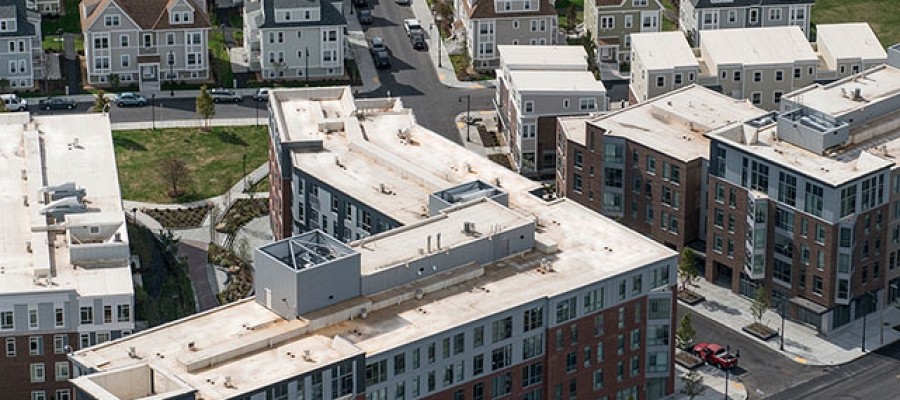
The Community Builders
Charlesview Residences and Town Homes at Brighton Mills is mixed-income housing in Boston.
Most after-school programs are located in schools or at community-based organizations. Those located in housing complexes are less connected to the larger after-school movement, according to a report from Temescal Associates, an after-school consultant in Oakland, Calif. They don’t get as much attention from policymakers, according to the report.
Schools are not necessarily willing to collaborate with after-school programs in housing developments, and program quality can be inconsistent, the Temescal report said.
However, housing providers are in a position to support teachers, students and after-school staff in dealing with issues including transiency, truancy and health issues, according to the 2015 Urban Institute report “Developing Housing and Education Partnerships.”
They can forge partnerships with schools and share data. They can make facilities available and they can also make school attendance a requirement in the lease.
A group of 13 nonprofit housing providers, Stewards of Affordable Housing for the Future (SAHF), is creating a way to measure the impact of services at housing complexes, including services for youth. The group has also developed measures for health, financial stability and community engagement.
Altogether, SAHF members have 135,000 rental units across the nation, providing housing to more than 35,000 children.
“We found that there were a lot of [SAHF members] doing service-enriched housing,” said Adam F. Cohen, policy and program associate at SAHF. “They were partnering with schools and other organizations, but they were ‘one-off’ partnerships. What was missing was a coordinated and strategic effort.”
For educational outcomes, SAHF is looking at the percentage of 3- and 4r-year-olds enrolled in preschool, the percentage of youth who graduate from high school and the percentage of residents who complete higher education. It’s surveying whether residents feel safe in their building and in their neighborhood.
It is also partnering with Chapin Hall at the University of Chicago to measure data for SAHF housing in Chicago.
[Related: Can After-school Program at Apartment Complex Turn Around a Failing School?]





























